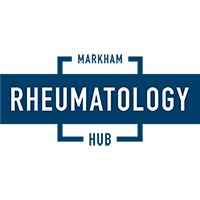Osteoporosis affects two million Canadians. This is a silent disease that develops over years. Osteoporosis results in thin bones (low bone density) that can break easily, following minor trauma, such as a fall from standing height. Osteoporosis does not cause pain, but broken bones can be painful. Common fracture sites in patients with low bone density include wrist, hip, spine and humerus (long bone of upper arm).
Did you know women and men alike begin to lose bone in the third decade of life? With menopause, women lose bone at a greater rate.
Both Men and Women may be at elevated risk of osteoporosis if over 65 years old OR between 50 – 64 years old with risk factors (current smoking, previous history of fracture after minor trauma, rheumatoid arthritis, or early menopause (before age 45) or parent with hip fracture).
Testing for Osteoporosis
Bone density testing (also known as a DEXA scan) is a simple painless test that measures the amount of bone in your spine and hip. This tells your doctor how thin your bones are and if you have osteoporosis.
Osteoporosis Prevention
Nutrition and Exercise are important for osteoporosis prevention. You will need to consider adequate calcium and vitamin D supplementation. Exercise is recommended to help with bone and muscle strengthening as well as with balance. It is best to speak with your healthcare provider about specific recommendations that are right for you.
Sometime good nutrition and exercise may not be enough to keep your bones strong and prevent fractures. There are medications that can be offered to improve bone density and prevent fractures.
Your healthcare provider may discuss these options with you as needed.
Dr. Thanu Ruban, Rheumatologist





